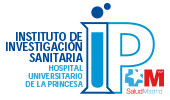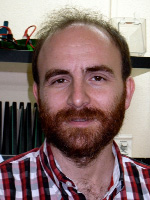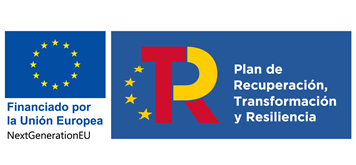Cellular and molecular responses to hypoxia
1.- Hypoxia signalling by reactive oxygen and nitrogen species
New redox proteomics techniques for thiol groups (see below) have allowed us to identify several proteins that are differentially oxidised in the acute response of endothelial cells subjected to hypoxia. A marked increase in protein S-nitrosylation and nitration has also been observed, pointing to an increase in reactive nitrogen species (RNS). New methods have been developed to accurately measure superoxide production in hypoxia. This has allowed us to measure this production at precise moments of acute hypoxia, and has shown that different cell types produce a "burst" of superoxide in acute hypoxia, which can be a signal of cell adaptation through acute responses as well as activation of the HIF pathway.
Currently the group is researching the mechanisms that lead to this acute production of superoxide. Hypoxia thus activates the Na+/Ca2+ exchange between the mitochondria and the cytoplasm, and the inhibition or silencing of the mitochondrial exchanger (NCLX) inhibits the "burst" of superoxide and the activation of the HIF pathway in cerebral tissues and cells. On conducting a more in-depth look into mechanisms that connect acute hypoxia with NCLX activation, mitochondrial complex I has been found to be involved in the activation of NCLX and the production of superoxide, in line with the role as an acute oxygen sensor that has been attributed to this complex. Additional preliminary results show that NCLX inhibition could also inhibit ROS production in reperfusion. The use of NCLX inhibitor has been patented as a new tool to inhibit ROS production and the HIF pathway, which could be useful when it comes to treating diseases in which these two factors are both present.
Future lines of research in this field:
- Study of ROS production mechanisms and signalling in acute hypoxia, and the role of mitochondria as oxygen sensors.
- NO production mechanisms and identification of S-nitrosylated proteins in acute hypoxia.
- NO production mechanisms in reperfusion, and the role of OXPHOS and NCLX complexes.
- Application of NCLX inhibition to the treatment of diseases: neurodegenerative diseases (Alzheimer's and Parkinson's – both of which are currently included in the research into animal models in collaboration with Manuela García López's group); lesions due to ischemia/reperfusion (stroke, myocardial infarction).
2.- Redox proteomics and oxidative post-translational modifications.
The functional role of S-nitrosylation has been analysed in various proteins through different collaborations. We have contributed to drawing up new hypotheses in the field of NO signalling and have looked at the role this modification plays in the immune system and in neuronal plasticity. We have developed methods for the detection of post-translational oxidative modifications of cysteine (redox proteomics of thiol groups), using fluorescent and 2DE marking, which we have applied to the study of hypoxia signalling (described above), acute pancreatitis and neurogenesis. In collaboration with Jesús Vázquez's group (currently in the CNIC), we have developed a redox proteomics method for thiol groups based on high performance LC-MS/MS. We are currently developing the application of this method to clinical samples, beginning with research into redox proteomics for thiol groups from heart valves, comparing samples of two diseases that result in replacing valves with normofunctional valves from heart donors.
Team members
|
Antonio Martínez Ruiz Hospital Universitario La Princesa |
Other team members. Hospital Universitario La Princesa:
|
Martínez Ruiz, Antonio. Involvement of hypoxia and reactive oxygen species in neurodegenerative diseases. Fundación Domingo Martínez. 2014-2015.
Martínez Ruiz, Antonio. Oxidative post-translational modifications in molecular pathophysiology. PI12/00875. ISCIII. 2013-2015.
Martínez Ruiz, Antonio. Hypoxia signalling by reactive oxygen species and redox proteomics: from molecular mechanisms to clinical applications. PI15/00107. ISCIII. 2016-2018.
Hernansanz-Agustín P, Izquierdo-Álvarez A, Sánchez-Gómez FJ, Ramos E, Villa-Piña T, Lamas S, Bogdanova A, Martínez-Ruiz A. Acute hypoxia produces a superoxide burst in cells. Free Radic Biol Med 2014. 71: 146-156. FI: 5.736(Q1). PMID: 24637263. DOI: 10.1016/j.freeradbiomed.2014.03.011.
Hernansanz-Agustín P, Izquierdo-Álvarez A, García-Ortiz A, Ibiza S, Serrador JM, Martínez-Ruiz A. Nitrosothiols in the Immune System: Signaling and Protection. Antioxid. Redox Signal. 2013. 18: 288-308. FI: 7.667(Q1). PMID: 22746191. DOI: 10.1089/ars.2012.4765.
Martínez-Ruiz A, Araújo IM, Izquierdo-Álvarez A, Hernansanz-Agustín P, Lamas S, Serrador JM. Specificity in S-Nitrosylation: A Short-Range Mechanism for NO Signaling?. Antioxid. Redox Signal. 2013. 19: 1220-1235. FI: 7.667(Q1). PMID: 23157283. DOI: 10.1089/ars.2012.5066.
Izquierdo-Álvarez A, Ramos E, Villanueva J, Hernansanz-Agustín P, Fernández-Rodríguez R, Tello D, Carrascal M, Martínez-Ruiz A. Differential redox proteomics allows identification of proteins reversibly oxidized at cysteine residues in endothelial cells in response to acute hypoxia. J Proteomics 2012. 75: 5449-5462. FI: 4.088(Q1). PMID: 22800641. DOI: 10.1016/j.jprot.2012.06.035.
Izquierdo-Alvarez, Alicia, Martinez-Ruiz, Antonio. Thiol redox proteomics seen with fluorescent eyes: The detection of cysteine oxidative modifications by fluorescence derivatization and 2-DE. J Proteomics 2011. 75: 329-338. FI: 4.878(Q1). PMID: 21983555. DOI: 10.1016/j.jprot.2011.09.013.


 Group leader:
Group leader:






